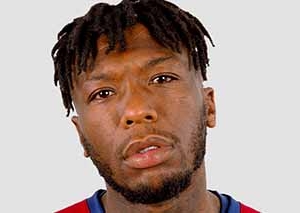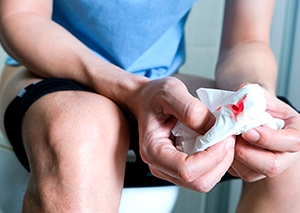According to Page Six, pop superstar Janet Jackson, 47, was observed obsessively wiping down her first class seat, window, tray and walls on a recent flight.
Witnesses say Janet was being more than just a clean freak. “This wasn’t a normal rubdown; this was 40 minutes of meticulously wiping everything,” a witness told Page Six.
“Janet had anti-bacterial spray, and was pulling one tissue out of a bag after another,” said the spy. Janet obsessively wiped down everything, including the phone, the TV monitor and her chair.
Janet’s obsessive-compulsive behavior shocked onlookers, including Victoria Beckham, who was seated near her in the first class section of a British Airways flight from London to LA on Friday.
Though the obsessive cleaning might make witnesses feel uneasy, it causes the sufferer to feel more comfortable in her surroundings.
Obsessive–compulsive disorder, also known as OCD, is an anxiety disorder characterized by disturbing thoughts that intrude into a person’s activities of daily living.
The thoughts, called obsessions, convince the sufferer that everything she touches is contaminated by germs. The thoughts lead to compulsive, repetitive behaviors such as hand washing and cleaning that eases those fears.
The repetitive, ritualized nature of the symptoms can be time-consuming and cause problems at home and in the workplace when the behavior disrupts normal routines.
Some people who have OCD recognize that their behavior is senseless. But the intrusive thoughts drives them to continue the compulsive behavior until the thoughts are relieved.
OCD can range from a mild to severe forms of the disorder.
In 2011, British police arrested an elderly couple whose OCD daughter died after taking dozens of showers a day to rid herself of unclean thoughts. An autopsy revealed that the 40-year-old woman died of dehydration and a skin infection from rubbing her skin raw.
OCD thoughts can take on many forms, from unclean thoughts to unwanted impulses to harm a loved one. Also, sufferers can be preoccupied with sexual or violent religious thoughts. Other sufferers may be preoccupied with extreme hoarding, or going back to repeatedly check a door that they already locked.
DIAGNOSIS
How do you know if you have OCD? According to Psych Central, there is no reliable diagnostic test for OCD.
Doctors diagnose the behavior based on physical exams and interviews with the patient, family or caretaker.
The disorder can affect children, adolescents and adults. Roughly one third of patients with OCD recall an early onset of OCD in childhood. Childhood trauma can lead to OCD. The British woman who died from OCD developed symptoms of the disorder as a child, after her grandmother died.
Others may develop OCD after head injuries, or after recovering from infections such as strep throat.
TREATMENT
Treatment for OCD includes a combination of behavioral therapy (BT), cognitive behavioral therapy, and medications to relieve the symptoms of OCD including anti-anxiety meds, serotonin reuptake inhibitors and antidepressants.
Medications may be prescribed from a class of meds called selective serotonin reuptake inhibitors (SSRIs). SSRIs prevents the reuptake (reabsorption) of serotonin in the brain. Serotonin is responsible for the regulation of mood, appetite, and sleep in humans. Too much serotonin can have adverse affects on memory, feelings of well-being and happiness.
Using Traditional talk therapy, doctors can persuade patients to control their anxiety without performing the repetitive rituals that causes more anxiety.
Patients who are convinced that their thoughts and fears are valid usually don’t do well with this kind of therapy.
CHILDREN WITH OCD
There are more than a million children in the U.S. who have been diagnosed with OCD. There are millions more children who are undiagnosed.
If you believe your child may have OCD, it is important to get therapy immediately. Sometimes children may not feel comfortable telling a parent or other adult about their disturbing thoughts. Observing your child’s behavior for signs such as cutting themselves or washing their hands obsessively is key.
Read more signs of symptoms of OCD in children HERE.
This has been your Medical Minute.
More Info On the Web
Disorders, OCD – Psych Central
Obsessive-compulsive Disorder, OCD – MayoClinic
Obsessive-compulsive Disorder, OCD – NIMH
Obsessive-compulsive Disorder – Wikipedia
DISCLAIMER
Any medical information published on this blog is for your general information only and is not intended as a substitute for informed medical advice. You should not take any action before consulting with your personal physician or a health care provider. Sandrarose.com and its affiliates cannot be held liable for any damages incurred by following advice found on this blog.





